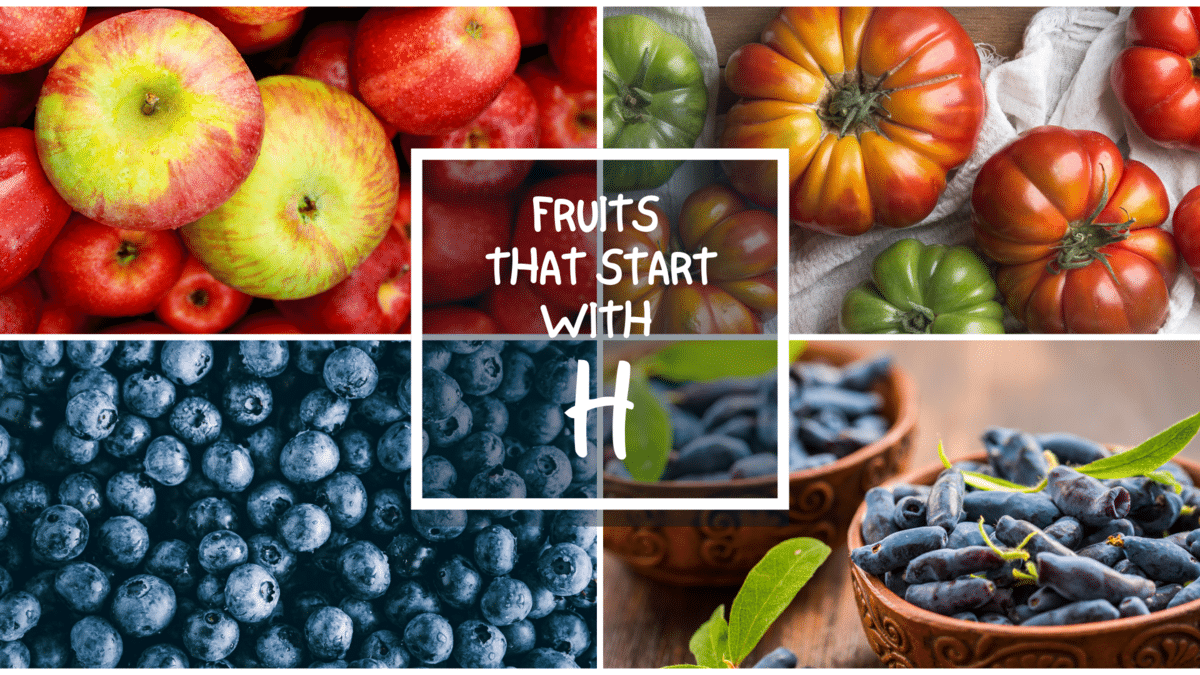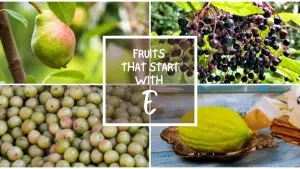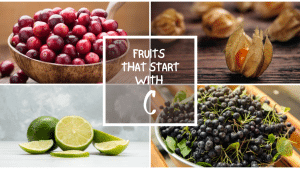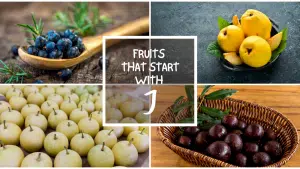All The Fruits That Start with H
Important Note: When you buy through our links, we may earn a commission. As an Amazon Associate we earn from qualifying purchases. Content, pricing, offers and availability are subject to change at any time - more info.
You need to know the fruits that start with the letter H to expand your fruit knowledge on the unique fruits that exist and have fun while at it. It is not hard to find fruits with the letter H. From honeycrisp apple to hala fruit to hazelnut. This list of natural fruits can be a good source for vitamins, keep your body hydrated, and make your skin soft. Below are several fruits beginning with the letter H around the world:
- Honeycrisp Apple
- Hairless Rambutan
- Heirloom Tomato
- Horned Melon
- Huckleberry
- Hackberry
- Highbush Cranberry
- Honeydew Melon
- Hottentot Fig
- Hazelnut
- Huito Fruit
- Highbush Blueberry
- Himalayan Mulberry
- Honeyberries
- Hawaiian Mountain Apple
- Hala Fruit
- Hog Plum
- Hardy Kiwi
- Honey Locust
- Hawthorn Fruit
- Hyuganatsu
- Habanero Pepper
- Hass Avocado
- Hot Pepper
- Horse Chestnut
- Hokkaido Squash
- The Final Letter
Honeycrisp Apple
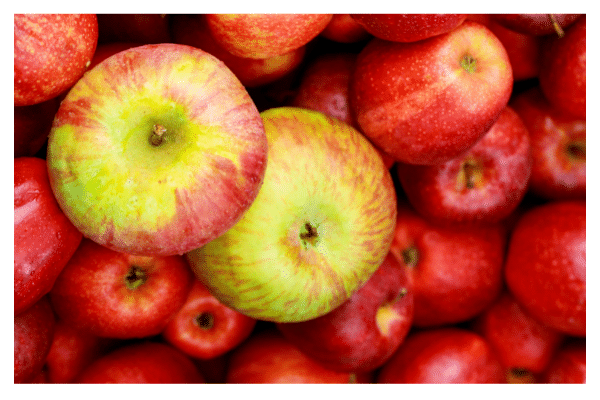
The scientific name of the Honeycrisp apple is Malus pumila. It is a type of apple discovered in the 1960s by the University of Minnesota. The fruit was exposed to the market in the 1990s. Honeycrisp apple is commonly grown in Minnesota. The name Honeycrisp Apple comes from its color and crunch. Its color is bright red on the inside with skin that yellow-green.
You can eat the fruit raw since it was created mainly for snacking with its sweetness and tartness. It has a sweet smell and taste with a hint of acidity. Honeycrisp apple has a delicate balance in its taste between sour and flavor, making it appealing. You can also use the fruit in cooking recipes for muffins, squash soup, and even in making a salad.
Hairless Rambutan
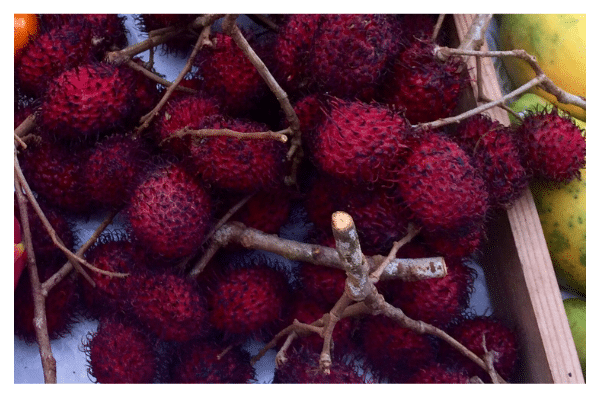
The fruit’s scientific name is Nephelium Xerospermoides. The tropical fruit is native to Malaysia and Indonesia.
It looks like the rambutan fruit but has no hair. The fruit has a sweet flavor and tastes like lychee fruit.
You can enjoy your hairless rambutan directly from the tree. It has a white stone at the center with red flesh surrounding it.
It has a sweet, creamy taste with a touch of sourness. It commonly contains nutrients such as Vitamin C. you can enjoy your hairless rambutan freshly picked from its tree. The fruit is, however, not reared for commercial use.
Heirloom Tomato

The scientific name of the heirloom tomato is Solanum Lycopersicum. It is also known as a heritage tomato in the United Kingdom. If you are wondering, tomatoes are a fruit. It is a fruit with diverse colors and shapes that vary according to variety. You can choose your heirloom tomato depending on the horticultural history, size, or taste. They come in many colors, such as purple, green, red, and yellow. The tomatoes have a sweet taste and do not have the genetic mutation common in standard tomatoes, which provides them with a uniform red color at the expense of the fruit’s flavor.
The fruit can be eaten while fresh or to spice things like juices and sauces. Also, you can preserve and can your heirloom tomatoes. Heirloom tomatoes are used in various recipes such as honey toast, kebabs, and even in salads.
The heirloom tomatoes are grown for their taste, food, access to a wide variety, and historical interest. You can easily buy heirloom tomatoes at local farmers’ markets and in grocery stores in America.
Horned Melon

The scientific name of the horned melon is Cucumis metuliferus. The fruit has a unique spikey wild-like appearance. It is an exotic fruit usually found in South and Central Africa. The horned melon has the taste of a sweet melon that includes a hint of cucumber, a very distinctive flavor. When not fully ripe, it has a bitter taste. A ripe horned melon is soft on the inside with edible seeds with orange skin. Its orange skin is covered in dots and red stripes. To prepare to eat horned melon, you require a knife to help you cut it open. After slicing it, you can scoop the inside, pour it into a bowl, or, better yet, directly into your mouth.
The origin of the fruit is central and south Africa. However, the fruit has spread to New Zealand, Australia, and America. An immune booster creates a great taste when added to a cocktail. It has several names, including African Horned Melon, Kiwano, and Jelly Melon. The horned melon is said to assist in healthy control of blood sugar, improve healthy skin, and support bone health.
Horned melon is used to create various delicacies such as infused water, ice cream, and even ice pops.
Huckleberry
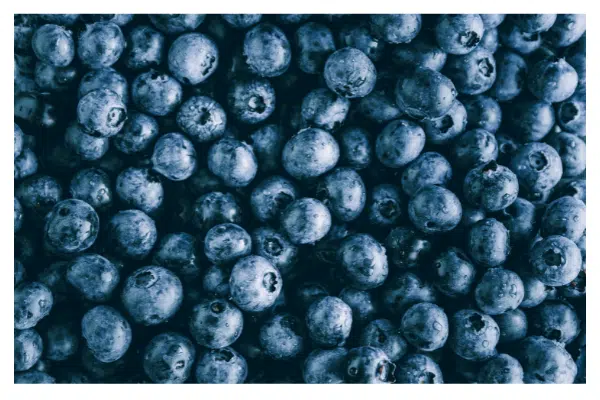
The scientific name of huckleberry is vaccinum. Except for its large size and less sweet taste, huckleberry resembles blueberries. The fruit produces single berries, where the leaves come in contact with the stem. They are commonly grown in North America and are Idaho’s state fruit. Historically, huckleberry has been used to assist in medicinal purposes. They come in colors like black, blue and red. You can use the tasty huckleberries in recipes for jams, ice cream, and pies. The fruit is not grown for commercial purposes.
Hackberry
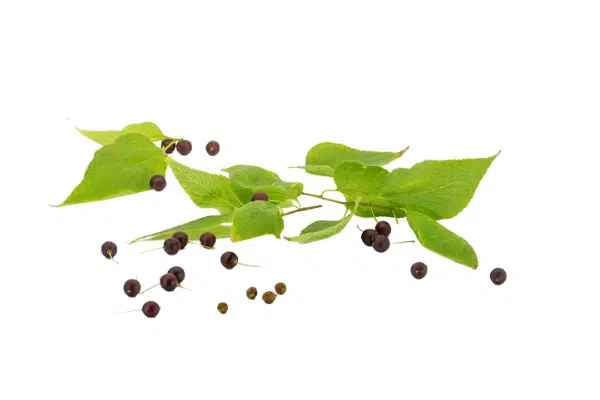
The scientific name of hackberry is Celtis occidentalis. The large Celtis occidentalis trees produce hackberry fruits. Hackberries are small dark red, and very tasty.
The hackberry has a crispy shell, edible seeds, and dry pulp. The seed found in it is candy-like. The berries have compared their texture and taste to peanut. they somehow taste like dates. However, you cannot find hackberries in American stores, only in nature. The hackberries treatment properties such as antifungal, antioxidant, and antibacterial properties. They are also known to be used as a pain killer.
Highbush Cranberry

The scientific name of hackberry is Viburnum trilobum. Highbush cranberry has other informal names, including guilder rose, American cranberry bush, marsh alder, dog elder, snowball tree, crampbark, ople tree, whitten tree, gatten tree, and water elder. It is originally from North America and has no relation to cranberries.
Although, it looks and tastes similar to that of cranberries. After removing the large seeds in the highbush cranberry, you can enjoy it raw or cook it into a sauce. It is a rich source of vitamin C. The drupe fruit is bright red when ripe and has a stonelike central core and a few seeds. Its taste is not so tasty, and it is juicy but quite acidic. The highbush cranberries are used to make jellies, jams, and sauces.
Honeydew Melon
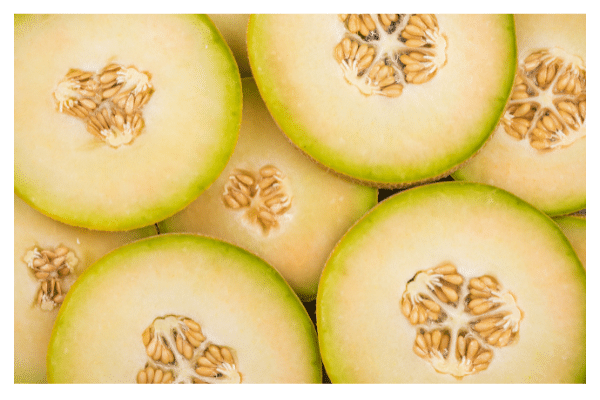
The scientific name of honeydew melon is Cucumis melo Inodorus group. At times it is called the green melon. They have white skin with a soft green inside. Its texture and taste are the same as a cantaloupe, and it is juicy and sweet. The common feature of the melon is its lack of musky smell and smooth rind. The honeydew melon originates from the Middle East. The fruit contains nutrients such as potassium, vitamin B, and C. You can use the honeydew melon in a delicious dessert or a fruit platter or make a honeydew cocktail.
Hottentot Fig

The scientific name of hottentot fig is carpobrotus edulis. Its other names include sour fig, highway ice plant, and ice plant. It is a fig originating from South Africa that has a sour taste. Hottentot fig’s difference from the typical fig is its sour taste. The fruit can be eaten fresh or after drying as you please. Both the fruits and leaves can be eaten. Be prepared for a lip-puckering experience since they are extremely tart. The juice of the fruit can aid in healing a sore throat and treating external conditions when mixed with a lotion. It treats external conditions like sunburns, cracked lips, ringworms, and bruises. The leaves of the Hottentot fig, when taken orally, can assist in correcting digestive problems. It can also be used in making jams and jellies.
Hazelnut
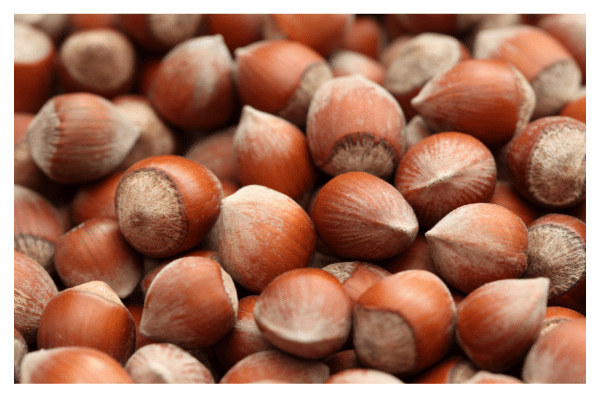
The scientific name of hazelnut is Corylus. It is also called filberts or cobnuts. Hazelnut is a delicious fruit that you can enjoy raw or blend into something delicious such as chocolate hazelnut. Hazelnut is combined with chocolate to make products such as hazelnut cocoa spread, chocolate bars, Frangelico liqueur, and chocolate truffles. The fruit is used in manufacturing hazelnut oil that contains a strong flavor and is generally used as cooking oil and in salads.
Huito Fruit
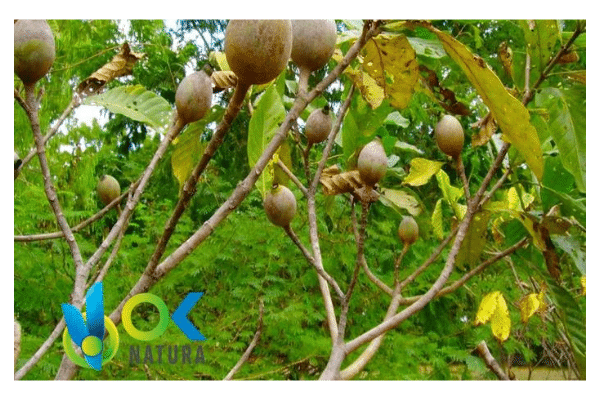
Huito’s scientific name is genipapo or Genipa Americana. Another name for huito fruit is the jaguar. The fruit contains a distinctive blue color. It has a gorgeous blue color used to manufacture natural dyes used in art and body painting. However, the exotic fruit has a bitter taste. You can use huito as an ingredient in making desserts, making lemonades, and ice cream. The juice from the huito fruit is clear; however, if it comes into contact with human skin, its color changes to blue. The unripe fruit can be used to make dye for tattoos.
Highbush Blueberry

Its scientific name is Vaccinium corymbosum. Highbush blueberry has other common names: high blueberry, tall huckleberry, swamp blueberry, blue huckleberry, and swamp huckleberry.
It is originally from eastern and southern USA and eastern Canada. With time highbush blueberry has spread to other areas like Newzealand, Japan, Europe, and North America.
This is the most popular kind of blueberry, and you can find it in just about any grocery store in America. The bush for highbush blueberry is easy to grow at home. It is commonly grown for its beautiful blue color in the fall and food. You can use highbush blueberries to add flavors to items such as cakes, desserts, and some beverages like tea. The highbush blueberry works as a food source for wildlife in North America.
Himalayan Mulberry
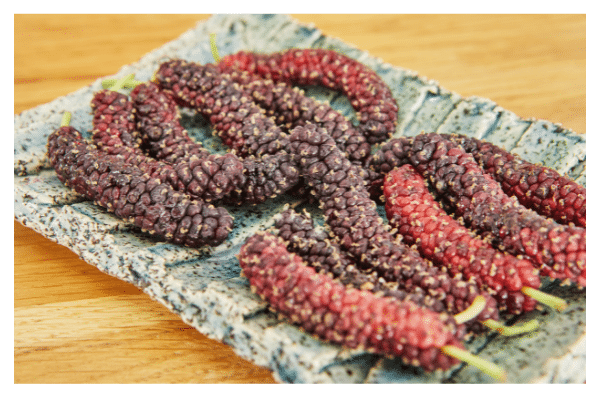
The scientific name of Himalayan mulberry is Morus macroura. The mulberries originated from the Himalayan Mountains and are commonly found in China and India. The Himalayan mulberry has a fantastic taste and is hardy. The tree grows the red edible fruits in groups.
They are common in black, red, and white colors. Due to their highly perishable rate, Himalayan mulberries are not easy to find in American grocery stores. They are found in a few farmer’s markets but mostly in nature on the trees. They offer a good source of antioxidant plant compounds and anthocyanins that protects one against heart disease. You can enjoy the fruit either dry or fresh. They can only stay fresh in a refrigerator for a few days, and if you need them for a longer time, you should consider freezing them. The Himalayan mulberries are commonly used in making jellies, jam, syrup, and wine. The mulberries can be used in preparing salad, porridge, and even a fruit bar.
Honeyberries
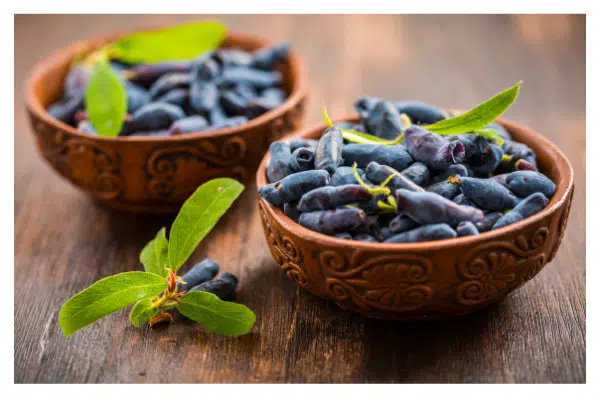
The scientific name of honeyberries is lonicera caerulea. The Japanese word for honeyberries is haskap berry.
The fruit tastes like a cross of blueberries and hasp berries. They share the same family with honeysuckle. The honeyberries’ taste is compared to be similar to that of grapes, cherry, or kiwi. You can enjoy the fruit fresh or use it in desserts, candy, and ice cream.
Honeyberries have been used to prepare food items such as pie, clafoutis, and even gin.
Hawaiian Mountain Apple
The scientific name of the Hawaiian mountain apple is Syzygium malaccense. It commonly grows on trees found in Hawaii, more so on the Big Island’s rainy side. Other names for Hawaiian Mountain Apple are water apple, Malay apple, and rose apple. The fruit is shaped like a bell and has waxy and shiny red skin. The ripe fruit has a juicy sweet taste.
Hala Fruit
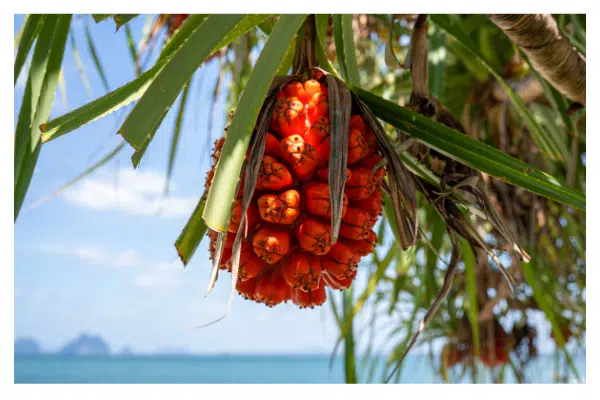
The scientific name of the Hala fruit is Pandanus tectorius. It is also called pandanus. The fruit grows from a towering tree known as Pandanus tectorius. It is related to the fragrant pandan leaf of Southeast Asia.
The fruit has a creamy texture. It resembles a strange pineapple or a large pinecone and contains segments known as cones. The outside of the fruit is very fibrous, but the inside is pulpy.
Hala fruit and leaves have a delicate sweet taste. The taste of the Hala has an undertone of the banana flavor with a cross of pineapple and mango taste. It has the smell of an enticing floral that you will love. However, if it is left ripe for too long, it produces a pungent smell. You can enjoy the fruit while fresh, squeezed to create juice, ground in a paste, or boiled into a paste. However, eating fresh Hala fruit has a little bit of work. You will need a claw hammer to remove a few keys. Each key has to be chewed at the center so that the fibers can break down, and then you can suck out the tasty nectar found inside.
Hog Plum
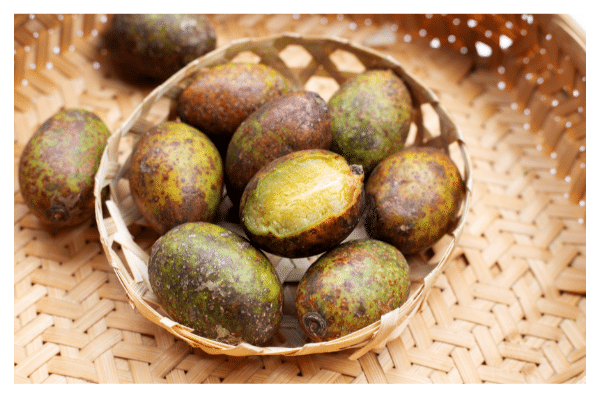
Hog plum’s scientific name is Spondias mombin. The other name for hog plum is yellow mombin. Hog plum is a plant species found in the family of Anacardiaceae and are native tropical American fruit. They usually grow to a length of about 1.5 inches. It nourishes in low environments.
The ripe hog plums are claimed to treat sores and as a heart tonic. However, you can also enjoy the fruit, and it’s not only beneficial to its medicinal benefits only. To spice up your drink, you can add hog plum to juices and smoothies. Moreover, the unripe fruit is commonly used as a recipe for Mexican dishes.
Hardy Kiwi
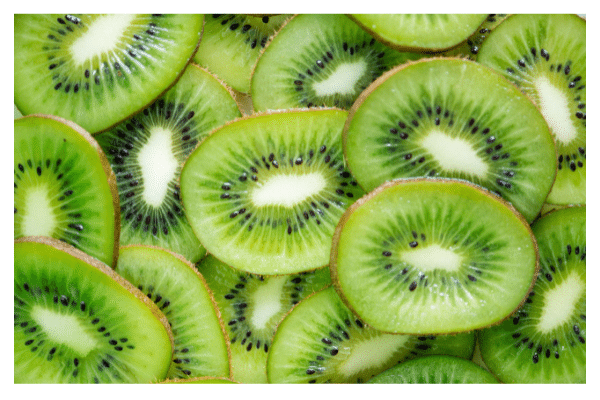
The scientific name of hardy kiwi is Actinidia arguta. It is also known as Chinese gooseberries. Hardy kiwi is native to nations such as Russia, Japan, Korea, and Northern China. They do not have the hair-like fiber covering common in other kiwis. Their thin skin allows it to be eaten whole without the need to peel. It is as small as a cherry tomato and resembles a small kiwi. It has a delightful taste that can be used in desserts and jams.
Honey Locust
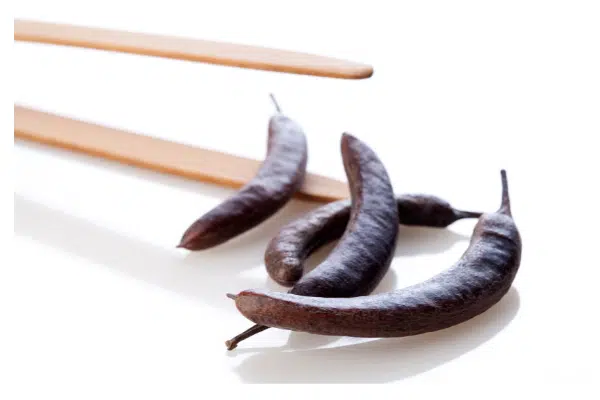
The scientific name of the honey locust is Gleditsia triacanthos. Other names for honey locusts are thorny locusts and thorny honey locusts. It is native to Central America. The name honey locust comes from its sweetness and pulpiness. Its pulp, when unripe, is bright green. The ripe pods are very succulent, crisp, and sweet.
Hawthorn Fruit

The Hawthorn fruit’s scientific name is Crataegus Monogyna. It has multiple names such as thornapple, quickthorn, whitethorn, haw berry, and May-tree. Hawthorn fruit is found in the family of Rosaceae.
The fruit is grown amongst trees in the wild across North America, Northern Asia, and Europe. They usually grow on shrubs and trees. It has a tangy taste with a mild sweetness.
Moreover, the fruit works well as the base of jellies, jams, and sauces. They offer an herbal remedy for a few conditions. The hawthorn plant is used by a few people who believe it assists with the anti-anxiety and digestive properties.
Hyuganatsu
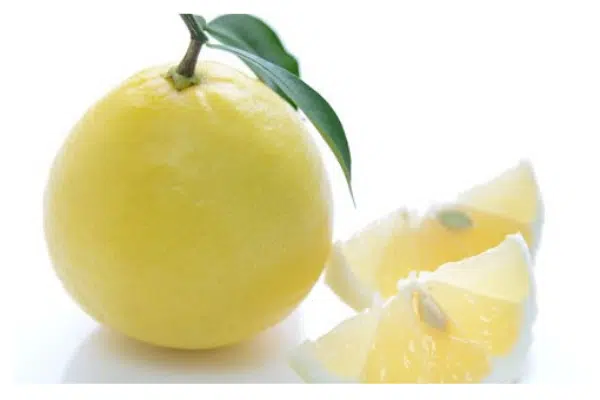
The scientific name of hyuganatsu is citrus tamurana. The fruit has a round shape and is of medium size. The fruit is yellow when ripe, and Hyuganatsu has sweet and juicy flesh with a sour taste. They are a hybrid of pomelo and yuzu that occur naturally. Unlike other citrus fruits, this one is not bitter. Other names for hyuganatsu are Kosa, New Summer oranges, Tosakpnatsu, Konatsu, and Sun Summer. Hyuganatsu is a source of nutrients such as Vitamin C, which strengthens the body’s immune system, and vitamin A which maintains the organ’s healthy functioning.
Habanero Pepper
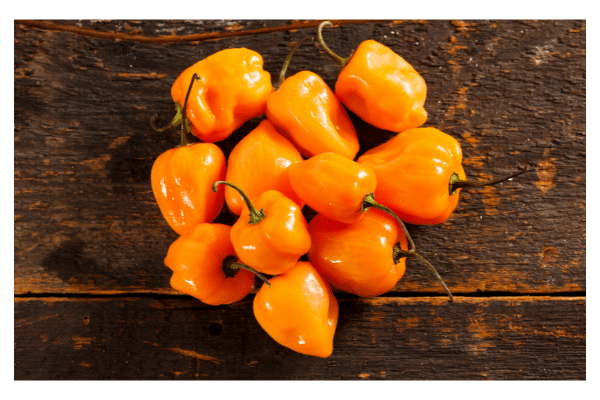
Habanero peppers are chilli pepper commonly used in hot sauces and other spicy dishes. They are native to the Americas and are typically found in tropical or subtropical regions. Habanero peppers can vary widely in terms of heat, with some being only mildly spicy while others can be extremely hot.
The scientific name for habanero peppers is Capsicum chinense.
Habanero peppers have a fruity, floral aroma and a slightly sweet taste with a fiery hot kick. They are often used in salsas, sauces, and marinades. When cooking with habanero peppers, it is important to use gloves and avoid touching your face or eyes, as the peppers can cause irritation.
Some potential health benefits of consuming habanero peppers include improved circulation, reduced inflammation, and pain relief. However, more research is needed to confirm these effects.
Habanero peppers are widely available in grocery stores and online retailers in the United States.
Hass Avocado

Hass avocados are a type of avocado that is native to California. They have a creamy, rich flavor and are often used in salads, sandwiches, and sauces.
The scientific name for Hass avocados is Persea americana.
Hass avocados can be eaten fresh, cooked, or baked into pies, muffins, and other desserts. They can also be made into soups, stews, and sauces.
Some potential health benefits of consuming Hass avocados include improved heart health, reduced inflammation, and cancer prevention. However, more research is needed to confirm these effects.
Hot Pepper
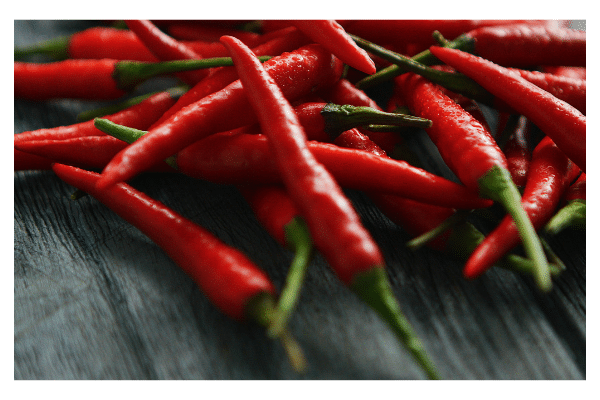
Hot peppers are a type of pepper that is native to Central and South America. They have a spicy, pungent flavor and are often used in sauces, salsas, and marinades.
The scientific name for hot peppers is Capsicum annuum.
Hot peppers can be eaten fresh, cooked, or baked into pies, muffins, and other desserts. They can also be made into soups, stews, and sauces.
Some potential health benefits of consuming hot peppers include improved heart health, reduced inflammation, and cancer prevention. However, more research is needed to confirm these effects.
Horse Chestnut
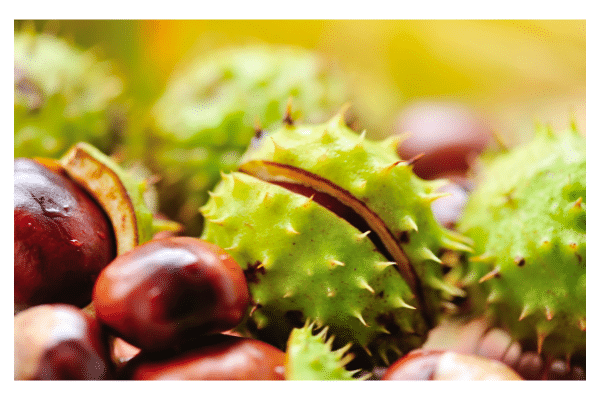
Horse chestnuts are a large, brown nut native to Europe, Asia, and North America. They have a sweet, nutty flavor and are often used in baked goods and desserts.
The scientific name for horse chestnuts is Aesculus hippocastanum.
Horse chestnuts can be eaten fresh, cooked, or baked into pies, muffins, and other desserts. They can also be made into jams, jellies, and syrups.
Some potential health benefits of consuming horse chestnuts include improved heart health, reduced inflammation, and cancer prevention. However, more research is needed to confirm these effects.
Horse chestnuts can be found fresh in the fall months and are also available canned or dried throughout the year. They can be purchased online or in some specialty food stores.
Hokkaido Squash
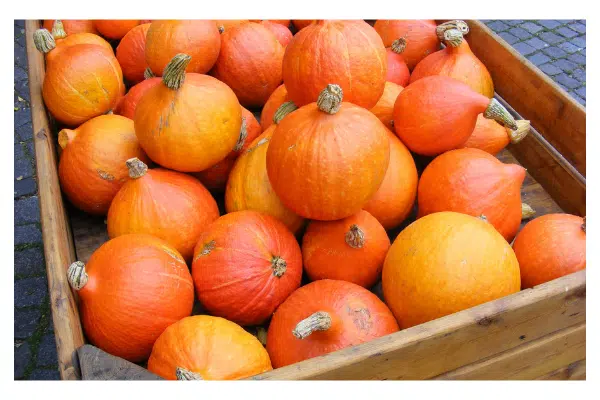
Hokkaido squash is a type of winter squash that is native to Japan. It has a sweet, nutty flavor and is often used in soups, stews, and casseroles.
The scientific name for hokkaido squash is Cucurbita maxima.
Hokkaido squash can be eaten fresh, cooked, or baked into pies, muffins, and other desserts. They can also be made into soups, stews, and sauces.
Some potential health benefits of consuming Hokkaido squash include improved heart health, reduced inflammation, and cancer prevention. However, more research is needed to confirm these effects.
The Final Letter
Choose any of these fantastic fruits starting with the letter H. You will get to enjoy their tasty flavors with an additional health benefit.
